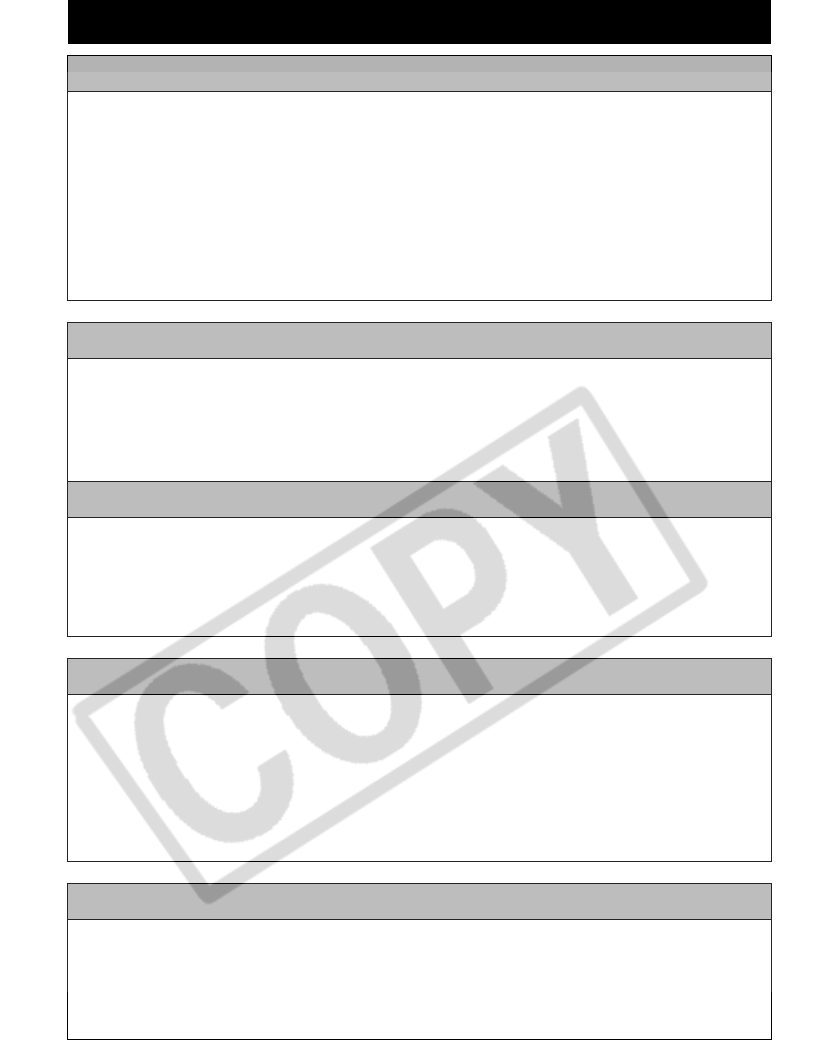
14
Proper Usage and Handling
Usage Location
z
Leave about 15 cm (6 in.) of clearance at the front and back of the devices and 10 cm (4
in.) of clearance on both sides.
Be sure to leave clearance around the paper-handling slot (at the rear) so that paper has
sufficient room to jut out from the slot during printing.
z
Do not use near strong magnets or near devices that produce strong electromagnetic
fields.
Electromagnetic radiation from devices such as TVs and game machines, and strong
magnetic fields from devices such as speakers and large motors, may cause distortion in
printed images.
When Not In Use
z
Attach the included dust cover to the rear of the printer.
If dirt or foreign objects enter the printer, print quality may deteriorate.
z
Unplug the power cord from the outlet. If using the battery pack, remove it.
But please note that you should plug in and run the printer at least once every six months
to ensure that it remains functional.
When Planning Not to Use for an Extended Period
z
When the printer is not in use, please remove the ink and paper cassettes from the
printer and store them.
Close the paper cassette’s top cover and store the paper cassette. Remove unused paper
from the paper cassette, return it to the bag and then into its original package. Store the
package horizontally.
Before Transporting
z
Before transporting the printer, remove the paper and ink cassettes, close the paper
cassette cover and the ink cassette cover, and attach the dust cover to the rear of the
printer.
If dirt or foreign objects enter the printer, print quality may deteriorate.
z
Pack the printer into an appropriate case for transport.
If a case is not available, wrap it with cloth or other protective material to protect against
scratches.
Avoid Condensation Related Problems
z
You can avoid condensation by placing the devices (printer, ink cassette, paper
cassette, paper) in an airtight, resealable plastic bag and letting them adjust to
temperature changes slowly before removing them from the bag.
Moving the devices rapidly between hot and cold temperatures may cause condensation
(water droplets) to form on their external and internal surfaces.


















